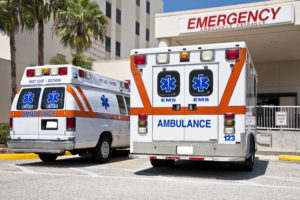The District of Columbia is not immune to the opioid epidemic gripping the nation. Opioid-related overdoses, hospital stays, and even deaths are on the rise in DC.
 Prescription opioids are strong pain-reducing medications—including oxycodone, hydrocodone, morphine, and fentanyl—that reduce feelings of physical pain and increase feelings of pleasure or relaxation. Opioids can help improve the quality of life for individuals with chronic pain or cancers, but they can also become addictive because of their potency. Likewise, heroin is an illegal opioid synthesized from morphine that people may turn to after becoming addicted to prescription opioids.
Prescription opioids are strong pain-reducing medications—including oxycodone, hydrocodone, morphine, and fentanyl—that reduce feelings of physical pain and increase feelings of pleasure or relaxation. Opioids can help improve the quality of life for individuals with chronic pain or cancers, but they can also become addictive because of their potency. Likewise, heroin is an illegal opioid synthesized from morphine that people may turn to after becoming addicted to prescription opioids.
Drug overdoses have risen in DC all but Ward 3. At least 198 people in the District died of an opioid overdose in 2016, more than double the 84 overdose deaths in 2014, according to a report by the Office of the Chief Medical examiner. Overall, there was a 102 percent increase in fatal overdoses due to opioid use from 2014 to 2016, and methadone and oxycodone were the most common contributors.
The people falling victim to opioid-related deaths in DC tend to be men, aged 50-59, and Black. And opioid deaths have been highest in Wards 5, 7 and 8 in recent years.
Opioid-related inpatient hospital stays and emergency department visits also increased, according to the national Agency for Healthcare Research and Quality. In DC, this amounted to about 318 hospital stays per 100,000 people, and rates were highest among men, individuals ages 45-64, and those in the bottom income quartile. Income tends to be a driving factor nationally, as places where the rate of opioid-related emergency room visits increased the most among patients was in communities with the lowest income. DC’s opioid-related inpatient stays are in line or lower than those of many other large central metro areas, including nearby Baltimore (1,541 hospital stays).
Thankfully, not all overdoses end in death, and EMS teams now administer drugs like naloxone that can reverse the effects of an overdose. Use of naloxone by DC’s EMS jumped 25 percent in 2014, and a further 77 percent in the last two years. This comes at a price that is rapidly escalating. The District now pays $30 for a prefilled syringe of naloxone, compared with $6 per dose in 2010, and has spent about $170,000 on naloxone in the last 10 months. Rates of naloxone use continue to rise in the area – DC averages 260 cases per month, while Fairfax and Montgomery Counties average between 60-70 cases per month, and Prince George’s County averages roughly 100 cases.
Amidst this national epidemic, what is the District doing to combat it? Check in for next week’s blog on District and regional responses to tackle this devastating and deadly problem.
